20+ Years Experience
Specialist Telehandler Hire
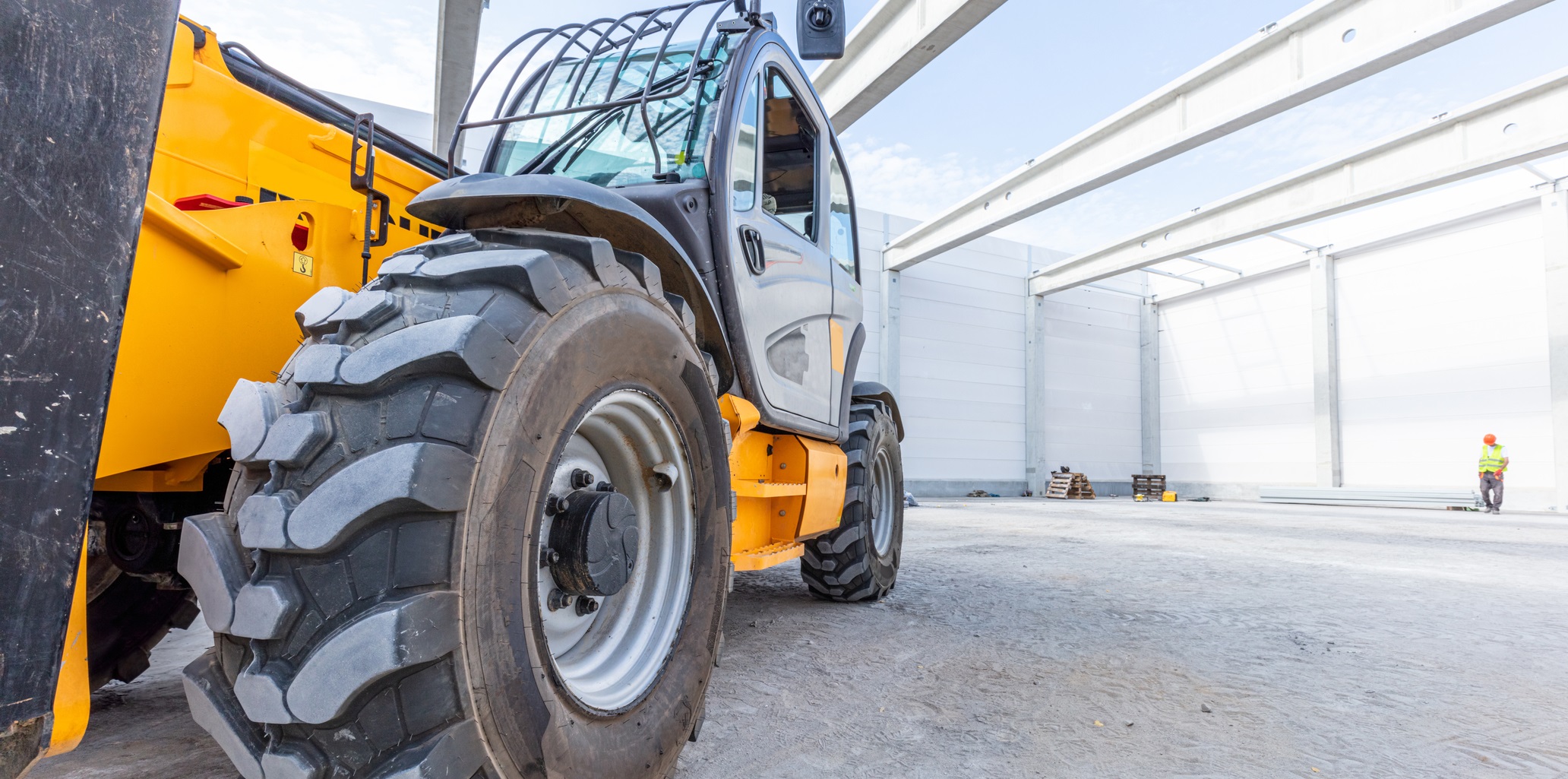
Enquire Today For A Free No Obligation Quote
Farming is a crucial business, and ensuring that there are sufficient resources to handle day to day operations is vital. Hiring the right tools and equipment can be the difference between success and failure. For those working in this field, having the latest and most efficient machinery is essential to maintain levels of productivity. Enter the telehandler – an invaluable piece of apparatus that can make a world of difference.
Nimble and versatile, telehandlers offer far more than just a lifting and moving solution. With the right features and attachments, this machinery can revolutionise the way you handle tasks in the field. From increasing versatility through multiple attachments to boosting efficiency with greater reach and power, unlocking the advantages of a telehandler for farming is easier than ever. So let’s dive in and explore what this incredible tool can do for you.
Using a telehandler in farming can provide farmers with increased efficiency, safety and precision when compared to manual labour. Additionally, telehandlers can be used for a variety of tasks such as moving heavy loads, transferring materials between areas, and reaching high or tight locations.
A telehandler is a type of machine commonly used on farms and in industrial warehousing operations. It is a type of forklift that can move goods, materials, and other items from one place to another with automated movement. This makes it an efficient way of handling large items in outdoor or indoor settings. Telehandlers are often used for stacking, lifting, and moving materials over long distances.
Telehandlers provide many advantages for farming operations, including increased material handling efficiency, cost savings, and improved safety regulations. They offer increased flexibility when dealing with heavy items as they can handle loads of up to 6 tonnes across varied terrain such as uneven ground and stairs. Furthermore, they are highly adaptable because they can be powered by either diesel or electric fuel sources and come equipped with many attachment choices like grapples or muck trailers.
On the other hand, owning a telehandler is associated with some drawbacks such as high initial purchase cost and maintenance fees. Furthermore, operating one requires specialised licencing which leads to additional costs for training and certification. Additionally, telehandlers need regular safety inspections that must pass certain standards before being put back into use.
Overall, telehandlers are an invaluable asset when dealing with heavy loads on farms and in industrial warehouses due to their fast speed of operation, versatility of attachments, accessible desktop controllers and unmatched mobility. Thus the benefits of investing in a quality telehandler far outweigh the potential downsides associated with purchase costs and maintenance fees. With this in mind, let’s look at the key features of a telehandler that make it such an ideal piece of agricultural machinery.
A telehandler is a versatile agricultural vehicle that is designed to help streamline farm operations. The machine, which can be operated by one person, comes with a variety of different attachments allowing it to perform many jobs around the farm. While there are both advantages and disadvantages of using a telehandler on a farm, understanding the key features of these machines is essential for making an educated decision about whether or not to purchase one for your farm.
First and foremost, telehandlers typically have a longer reach than traditional forklifts, up to 30 feet in some instances. They also have much higher lift capacity than typical forklifts, so operators can manoeuvre heavier loads more easily and safely. Additionally, their non-marking wheels make them ideal for loading and unloading onto trailers without causing any damage to the trailers’ surface. Telehandlers also offer increased visibility from the operator’s seat due to their elevated platform, which is especially beneficial when transporting bulky items or working in tight spaces.
The main disadvantage of telehandlers is that they require more maintenance than other equipment due to the variety of attachments used with them. Additionally, because they have an extended reach capability, they can sometimes experience instability when handling heavier loads at great heights. This may increase the potential for accidents or injury if proper safety protocols aren’t adhered to.
These are just some of the key features of a telehandler that should be taken into consideration before investing in one for your farm operations. With an understanding of what these machines can do and how they might be beneficial in certain situations, farmers can make more informed decisions about whether or not this piece of equipment is right for their specific operations.
Now that you understand the key features of a telehandler, we will dive into exactly how it could benefit farming operations in the next section as we look at “The Advantages of Using a Telehandler for Farming”.
Telehandlers are a versatile agricultural vehicle that can be operated by one person and are equipped with a variety of attachments to complete different tasks around the farm. They have higher lift capacity than traditional forklifts, allowing for heavier loads to be moved more easily, along with increased visibility from the operator’s seat. However, they require more maintenance than other equipment and can be unstable when working on heavier loads at greater heights, which can increase potential for accidents. It is important to understand the features of a telehandler and consider how it could benefit farming operations before investing in one.
Using a telehandler in farming offers many advantages. This piece of equipment is versatile, providing farmers with the ability to do much more than they could do with other machines or physical labour alone. A great deal of equipment can be transported swiftly and securely, such as feed, manure, fencing materials, vehicles and tools. In addition, its lift capacity can expand production capabilities in other areas considerably.
Farmers benefit greatly from using a telehandler due to its sheer speed and power. Compared to manual loading and unloading of supplies onto trucks or trailers, a telehandler can move a greater quantity of materials at once, reducing the time spent on such tasks. It also reduces the need for extra labour when working with heavy items. As it does not require workers to constantly be moving supplies by hand, their time can be better utilised in more productive ways.
But there are downsides that come with using a telehandler for farming operations, such as its large size. It takes up a great deal of space and can be difficult to manoeuvre in tight areas—a problem that is especially pertinent for smaller farms with more limited land available. Additionally, specialised training is required in order to fully make use of the machine’s capabilities safely and efficiently.
On balance, the advantages to using a telehandler in farming far outweigh these potential disadvantages. It increases efficiency across many different levels, cutting costs by both reducing labour hours and improving yields—benefits that cannot be denied or overlooked. By recognising these advantages and investing appropriately in both equipment and training, farms can take the next step towards maximising their success going forward.
Properly deploying a telehandler has directly improved efficiency in many farms thus far–the next section will explore how farmers have been able to capitalise on these gains made through utilising this helpful piece of machinery within their operations.
Improved efficiency is one of the principle advantages of hiring a telehandler for farming. With a telehandler, farmers can perform multiple tasks faster and easier than with traditional equipment and labour. For example, unloading material from a truck can be done with greater speed and precision than by hand – particularly in larger yards. Loading bales of hay or straw onto transport trucks is also much quicker since they can be put into position without manual labour.
In terms of safety, a telehandler effectively eliminates the risk of human trafficking accidents as human operators are no longer required to go in and out of the truck to lift, move and deposit heavy materials. Telehandlers also provide additional flexibility for farmers when labelling stacks, shelves or various farming equipment; machines can place materials in and out of tight spaces that would otherwise be unaccessible by humans.
Telehandlers are capable of drastically cutting down on labour hours due to their incredible manoeuvrability and effective execution times. They are able to work through rain, snow or mud without having to reposition themselves and need minimal maintenance compared with other farming equipment.
On the negative side, some argue that investing in a telehandler may initially seem overwhelming due to the initial cost investment; however, the long-term savings will outweigh any costs incurred in acquisition, maintenance or operating fees. Additionally, some farmers may find that their current workflow does not require such an increase in efficiency and may still opt for manual labour methods instead.
In conclusion, improved efficiency is one of the main advantages of hiring a telehandler for farming due to its time-efficiency capabilities, flexible manoeuvres and lack of need for manual labour. Moving forward, it is important to consider potential cost savings associated with investing in this type of equipment. This will be discussed further in the following section about cost savings.
When considering the cost savings of a telehandler for farming, one must factor in the advantages of fewer costly equipment purchases. Not having to purchase multiple pieces of machinery saves time, but it also conserves resources and eliminates the need to buy extra parts and accessories. Furthermore, since many farms already have an established tractor fleet, they can often take advantage of the already available unified power system which minimises the amount of necessary maintenance or performance upgrading.
On the flip side, buying a single machine that has all that it needs to facilitate harvesting, planting, and moving capacity can be costly upfront. This limits production potential in both short term yields and long term cost savings. The initial outlay might not pay off if its capabilities are not fully utilised or if there is downtime due to mechanical issues that could have otherwise been avoided by using separate machines for each job.
After taking these points into consideration, it is clear that saving money with a telehandler make sense in many cases depending on the scope of intended tasks and desired output. Taken together with other benefits such as safety enhancements and space saving efficiency, utilising a telehandler for farming may result in beneficial cost savings.
Focusing on cost savings is important; however, time-saving benefits should also factor into any farm’s decision making process regarding equipment acquisitions. The next section will identify ways in which a telehandler can help streamline workflows and decrease overall operational time.
Time-saving is one of the most frequently cited advantages of hiring a telehandler for farming. Telehandlers are highly efficient, allowing operators to move large loads quickly and safely. This eliminates the time-consuming practise of manually loading and unloading heavy equipment from trucks or trailers. Plus, because telehandlers have greater reach than forklifts, they can reach farther and higher than other lifting equipment, which reduces the amount of time needed to transport materials around a farm.
Another way that telehandlers save time is that they can be used for a variety of different tasks—including lifting, stacking, and loading hay bales or carrying bulky items like logs and tyres around a large property. This means farmers don’t have to switch back and forth between multiple pieces of equipment or hire multiple people to perform various tasks. It also allows operators to multitask easily, further streamlining operations.
However, it should be noted that some people feel that telehandlers take longer to use than manual methods. After all, there is an initial learning curve involved in operating these sophisticated machines, acclimating to the controls and mastering their power capabilities. Additionally, if someone abuses their machine by pushing it too hard or not performing regular maintenance tasks, then it could lead to breakdowns and delays in production. Nevertheless, on balance there are many ways that telehandlers save time across farming operations.
By unlocking the advantages of hiring a telehandler for farming, farmers can experience greater efficiency and time-savings when completing laborious tasks. In addition to providing long-term cost savings and improved safety features, telehandlers’ increased productivity gives farmers an extra edge when running their business operations. That’s why it’s important to evaluate whether investing in a telehandler for your agricultural business makes sense for you financially and operationally – so you can be sure you’re getting the most out of your investment. Coming up next – let’s look at the impact that telehandlers have on productivity when working on a farm.
When it comes to farming, increased productivity and efficiency can be achieved through the use of telehandlers. This versatile machine allows for fast and easy transport of bulky items (such as bales of hay or large crates of agricultural products) from one area of a farm to another. With its ability to lift and move loads up to three tonnes in weight, a single operator can now cover twice the ground in half the time when compared to traditional methods such as wheelbarrows. This increased efficiency translates into greater profitability for farmers since they have more time to focus on other tasks instead of pushing and carrying heavy items around.
While a telehandler can certainly help increase the productivity of a farm, there are some potential drawbacks to consider. For example, due to the number of parts required and the complexity of the machine itself, there is always a risk that something could break down and cause unexpected downtime. Furthermore, operators must be properly trained in order to safely operate the machine and ensure that it performs as intended.
Nonetheless, with proper maintenance and experienced operators, the advantages of increased productivity offered by a telehandler far outweigh any potential disadvantages. These benefits allow farmers to maximise their output while potentially reducing their total labour costs.
As we have seen, one key advantage of using a telehandler on a farm is improved productivity. In our next section, we will explore some of the additional features and benefits that make this machine an invaluable tool for agricultural operations.
When deciding to purchase a telehandler for farming, the benefits don’t stop at increased reach and capacity. Telehandlers offer some unintended additional advantages for farmers across a range of activities and circumstances.
First and foremost, telehandlers increase safety on the farm in both direct and indirect ways. Telehandlers are designed for stability and are generally equipped with measures like load-sensing hydraulic systems which ensure that sudden or unexpected movements do not occur. They also come with operator protection features such as roll-over protective structures, seatbelts, grab handles, fire suppression systems, and more. These features help minimise the chances of an accident due to equipment failure or user error. Additionally, telehandlers are designed with tyres specifically made for the terrain of a farm – reducing the risks posed by operating on rough terrain or driving over debris or ground obstructions. Finally, the capability of a single operator increasing their reach means that other workers are at less risk of danger.
Telehandlers also boast other convenient features that can benefit farmers in many ways. For example, modern telehandlers include the ability to adjust both drives while driving in order to reduce travel time between tasks. The ergonomic design of these machines reduces fatigue so operators experience less physical strain over time. Furthermore, because of their considered design and construction shape, telehandlers are less likely to gather mud which makes them easy to clean after use and reduces maintenance requirements.
All these positive characteristics aside, it is important to consider the overall cost implications when investing in a telehandler since they often come with an elevated initial price tag compared to other machines performing similar tasks. Though these benefits may be difficult to quantify immediately through evidence-based metrics such as cost savings or enhanced productivity – they should still be taken into account when making decisions about farming investments .
Having discussed the additional benefits of hiring a telehandler for farm work – ranging from increased safety to convenience – this section will now move on to consider how skilled labour affects operations.
When it comes to hiring skilled labour for a farming business, the telehandler presents a number of advantages. Perhaps most importantly, this type of equipment requires less intensive training than other machinery, with operators becoming proficient in as little as four hours of operating instruction. As a result, finding and onboarding skilled labour can be faster and less costly. Furthermore, telehandlers typically require fewer operating procedures than other similar machines, meaning once it has been explained the staff member can go about their task in a relatively short space of time.
On the other hand, due to its increased level of complexity, it is more important than ever to hire experienced professionals when it comes to operating a telehandler. They need to understand how the machine performs differently depending on load weight and centre-of-gravity proximity as well as being highly familiar with the best practises around setting up safeguards that protect personnel and the environment. As such, selecting the right operator is more crucial since any incorrect manoeuvres resulting in adverse outcomes during operations could have serious implications.
Having discussed the importance of skilled labour regarding telehandlers, we’ll now move on to examining the manoeuvrability of these machines and how they can benefit farming operations.
Manoeuvrability is often cited as one of the biggest advantages of using a telehandler for farming. With its sleek design and long, manoeuvrable arm, telehandlers are well-suited to navigating confined spaces and challenging terrain. Operating in tight spaces requires a level of precision that can be difficult for other vehicles – particularly those with large footprints – but telehandlers have proven to be both nimble and agile enough to tackle the job.
There are also those who argue that telehandlers lack the manoeuvrability of heavier machinery. While it’s true they do not come with the same level of power, they still maintain an impressive range of motion, which is what allows them to navigate different terrains. The fact that many models offer four-wheel drive adds further versatility. This can prove especially beneficial in driving over sloped or uneven surfaces, where other machines may not be able to reach without getting stuck or damaging crops and soil.
Telehandlers feature hydraulic systems that give their operators fine-tuned control of how much power needs to be used in a particular situation. In other words, they can use just enough power where too much power might actually hinder performance or cause damage. This means that despite their size and weight, telehandlers can both efficiently and effectively manoeuvre through a variety of tasks with great accuracy.
The range of motion, four-wheel drive capabilities, and finely-tuned power from telehandlers make them highly capable of quickly navigating worksites that require agility. With the ability to handle a variety of tasks in challenging terrain or limited space circumstances, telehandlers have proven to be an invaluable tool for farmers around the world.
Next section: Handling Materials at Height
Telehandlers offer an array of benefits when it comes to handling materials at height — one such benefit being increased safety and efficiency.
When on a farm, there are plenty of opportunities to use a telehandler in order to access and transport materials at height. By leveraging the reach of this type of equipment, farmers can move items such as fertiliser, hay bales, and building supplies without having to build or erect ladders or scaffolding. The versatility and compactness that a telehandler offers can be especially advantageous when working in tight spaces or limited areas.
Not everyone is convinced that using a telehandler for material handling at height is worth the cost. Supporters of other types of construction equipment, such as aerial lifts, often argue that these devices offer more stability and ease of manoeuvrability for accessing materials at heights too high for ground-level access. It should be noted however that when used properly, telehandlers offer plenty of stability and can manoeuvre in many different ways to access materials from any angle or elevation.
At the end of the day, the decision to use a telehandler for material handling from high locations comes down to individual preferences and needs. No matter what solution a farmer chooses, access to materials at height is an invaluable asset that every business should consider utilising.
With benefits ranging from cost savings to convenience, telehandlers offer an impressive amount of power that should not be overlooked when it comes time to make decisions about material handling at height. Now that we have discussed the advantages of using a telehandler for this purpose, let’s explore the next question: Are Telehandlers For You?
When considering whether buying or renting a telehandler is right for you, the answer comes down to your specific needs and goals. Telehandlers are an expensive piece of equipment and can provide an invaluable boost to farming businesses looking to increase efficiency, productivity, and versatility in their operations.
One of the major advantages of investing in a telehandler is its superior lifting power. With a max lift capacity of up to 10 tonnes, telehandlers are well-suited for handling heavy materials, such as hay bales, pallets, grain containers and more. Telescopic booms also make it possible to easily reach high places like tree branches and rooftops for quick access without having to use ladders or other potentially dangerous methods.
Additionally, these machines are highly versatile and can be used for various tasks on the farm, from ground-level work such as material transport and spreading soil to higher-level tasks like loading tractor trailers with pallets of supplies or hay bales. The use of a telehandler also eliminates the need for multiple smaller machines as it can take on many roles with one machine. Additionally, these machines are made for rough terrain and off-road operations, making them ideal for use on farms with rough terrain requiring navigation around obstacles or challenging weather conditions.
On the flip side, telehandlers can be costly investments that require specialised training before they can be operated safely and efficiently. For farmers who prefer to rent rather than buy a telehandler, availability may be lower in certain areas. Additionally, telehandlers come with increased safety risks due to their larger size and lifting power compared to other farm machinery. Operators should be well-versed in all safety protocols before operating one of these machines on the farm.
Overall, while there are pros and cons associated with investing in a telehandler for farming operations, it’s worth looking into if you are interested in finding ways to enhance productivity and efficiency on your farm. Taking into account your budget limitations, safety regulations, available rental options and other factors should help you decide if this is the right investment for your particular circumstances.
The financial benefits of using a telehandler for farming are numerous. Firstly, it reduces labour costs associated with manual labour – as the machine can do many tasks that require a human to do manually or hire out to someone else, such as harvesting and transporting crops, loads of hay, bales, etc.
Additionally, telehandlers for farming typically have lower purchase costs compared to similar material handlers. This cost savings will continue over the life of the machine since it doesn’t require special fuel additives, and its maintenance costs are typically low.
Also, telehandlers are versatile machines and can be used to complete multiple tasks on a farm effectively which results in higher production levels while keeping energy consumption at lower levels. Lastly, telehandlers often come with attachments that allow farmers to perform more specialised tasks such as forestry work or spraying/harvesting fruit trees. These attachments also improve efficiency and provide additional cost-savings due to their multiple uses.
A telehandler can significantly improve safety on the farm by allowing operators to work from a more secure elevated platform, away from areas of potential danger. This reduces the risk of falls and collisions with other vehicles, animals or structures, as well as reducing the risk of injuries caused by manual handling of items such as bales, feed bags and tools. In addition, a telehandler can make loading and unloading operations much faster and safer, with fewer personnel needing to be near hazardous or difficult-to-reach locations. The machine’s ergonomically designed controls are also easier on the body, helping reduce the risks of overuse injuries associated with manual handling. All in all, using a telehandler on a farm is an effective way to mitigate potential risks while improving efficiency.
A telehandler can help with farming operations in multiple ways. Firstly, they can lift and move heavy loads safely and quickly, making it easy to work around large and awkward objects on the farm. Secondly, they are ideal for accessing difficult-to-reach areas such as rooftops, building sites and high structures. Thirdly, they provide excellent manoeuvrability and small turning circles, so you can easily move between destinations within the farm. Finally, a telehandler is ideal for picking up and transport of palletised goods, feed supplies and other materials necessary for daily farming operations.
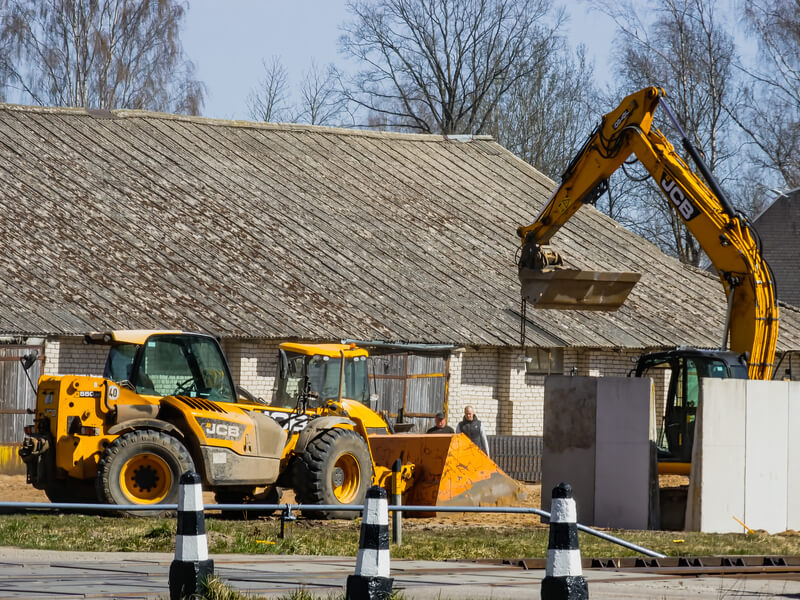
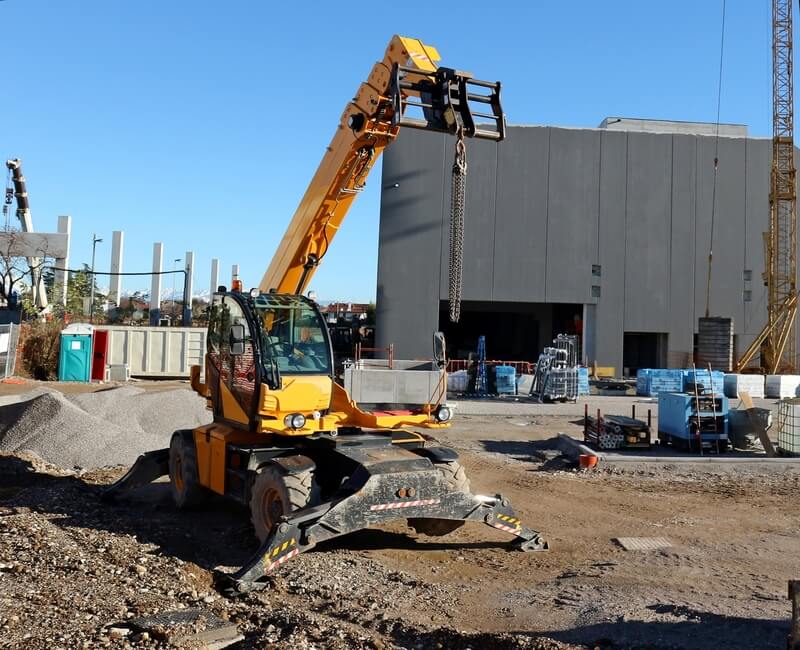
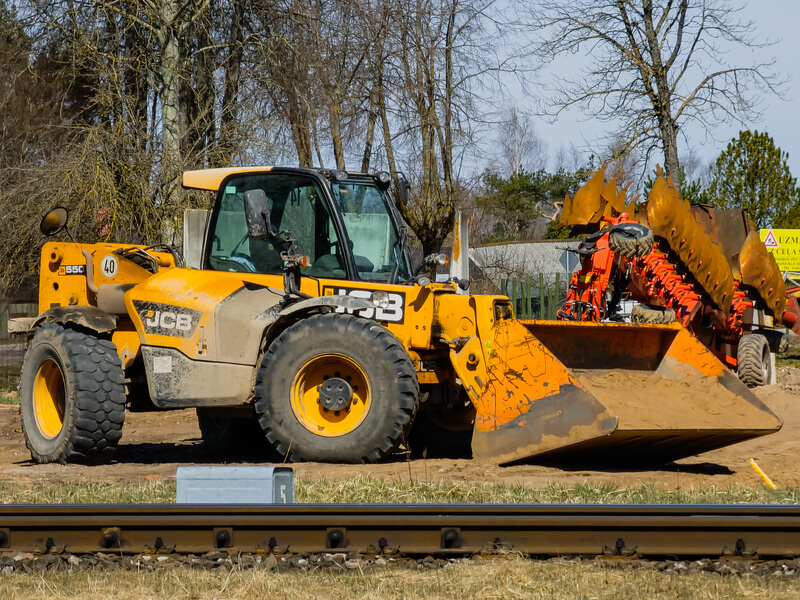
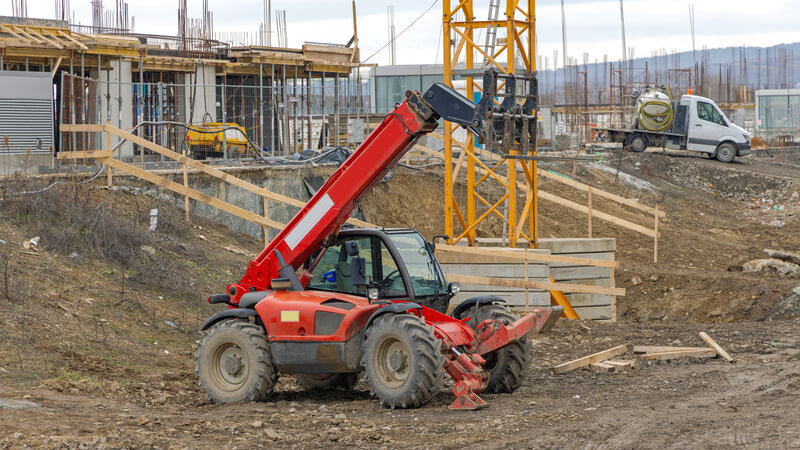
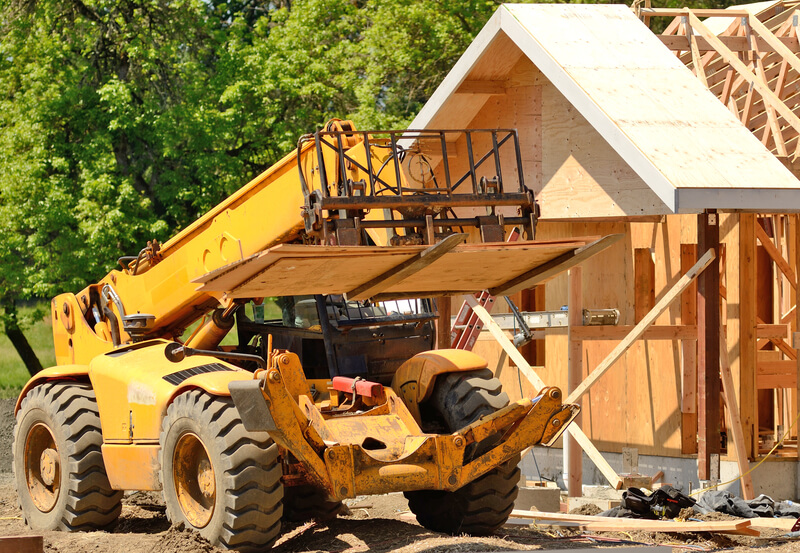
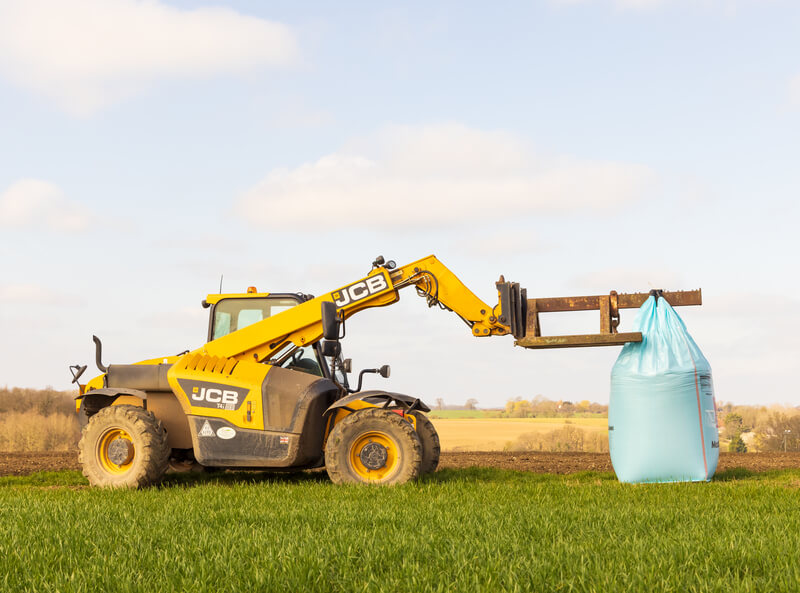
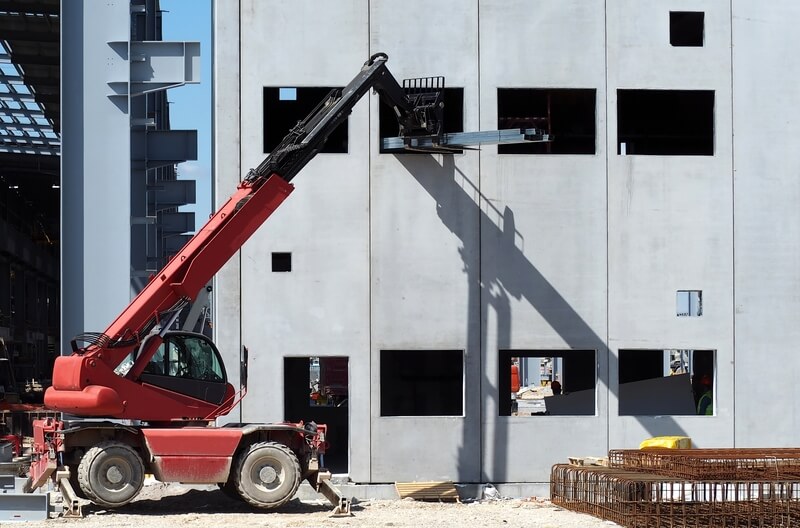
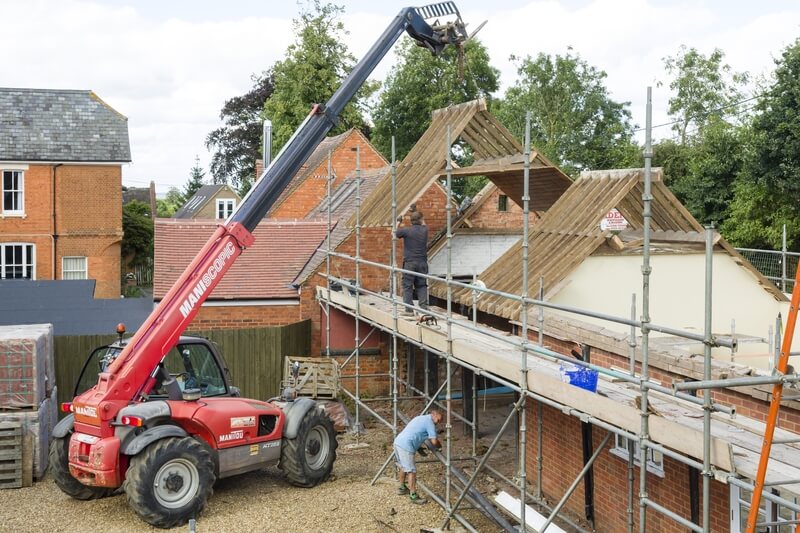
We Aim To Reply To All Enquiries With-in 24-Hours